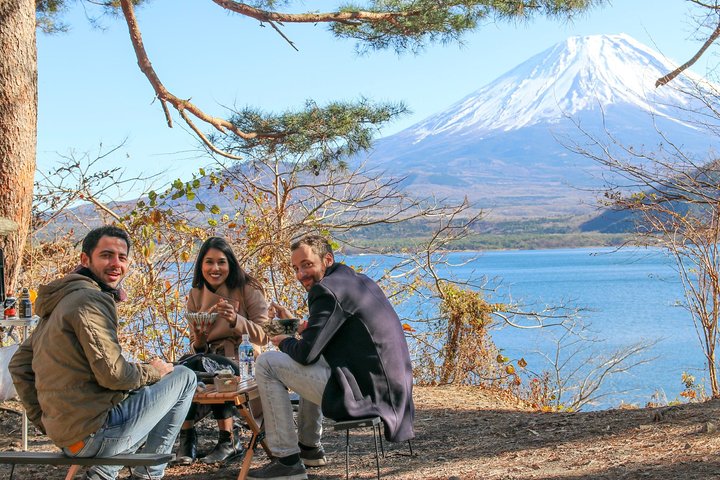Exploring the Spiritual and Scenic Wonders of Mount Fuji
Drawn by the allure of Mount Fuji’s natural beauty and cultural significance, I embarked on a journey from Tokyo to explore its mystical landscapes and spiritual heritage. Join me as I recount my experiences on this unforgettable tour.
A Journey Through Hakone’s Mystical Landscapes
As I embarked on the Mount Fuji Tour from Tokyo, I was filled with anticipation. The allure of Mount Fuji, a symbol of Japan’s natural beauty and cultural heritage, had always captivated me. Our first stop was Hakone, a town nestled in the Fuji-Hakone-Izu National Park. Known for its hot springs and stunning views of Mount Fuji, Hakone is a place where nature and spirituality intertwine.
The Hakone Ropeway offered a breathtaking aerial view of the Owakudani Valley, a volcanic wonderland with steaming sulfur springs. The air was crisp, and the landscape was otherworldly, reminding me of the delicate balance between nature’s beauty and its raw power. As we descended, the sight of Lake Ashi, with its serene waters reflecting the majestic Mount Fuji, was a moment of pure tranquility.
Visiting the Hakone Shrine, with its iconic red torii gate overlooking the lake, was a spiritual experience. The shrine’s peaceful atmosphere, surrounded by towering cedar trees, invited reflection and mindfulness. It was a reminder of the deep connection between Japan’s natural landscapes and its spiritual traditions.
Embracing the Serenity of Lake Yamanaka and Oshino Hakkai
Our journey continued to Lake Yamanaka, one of the Fuji Five Lakes. The lake’s tranquil waters and scenic walking trails offered a perfect escape from the hustle and bustle of city life. As I strolled along the lakeside, the view of Mount Fuji in the distance was a constant companion, its snow-capped peak a symbol of timeless beauty.
Oshino Hakkai, with its eight crystal-clear ponds fed by Mount Fuji’s snowmelt, was a picturesque stop. The traditional thatched-roof houses and charming rural atmosphere transported me to a bygone era. Here, I savored authentic ramen, a culinary delight that warmed my soul and connected me to the local culture.
The serenity of these locations was a testament to the harmonious relationship between Japan’s natural beauty and its cultural heritage. Each step along the way was a journey into the heart of Japan’s rich traditions and breathtaking landscapes.
Cultural Immersion at Kitaguchi Hongu Fuji Sengen Shrine and Beyond
Our final destination was the Kitaguchi Hongu Fuji Sengen Shrine, a sacred site dedicated to the deity of Mount Fuji. As I walked along the moss-covered stone path, lined with ancient cedar trees, I felt a profound sense of reverence. The shrine’s history and its ties to the spirit world were palpable, offering a glimpse into Japan’s spiritual heritage.
The shrine’s vast precincts, with their towering trees and atmospheric approach, were a sanctuary of peace and reflection. It was a place where the past and present coexisted, where the whispers of history could be heard in the rustling leaves.
As the day came to a close, I reflected on the journey. The Mount Fuji Tour had been more than just a sightseeing trip; it was a cultural immersion, a journey into the soul of Japan. From the mystical landscapes of Hakone to the serene beauty of Lake Yamanaka and the spiritual depth of the Kitaguchi Hongu Fuji Sengen Shrine, each moment was a reminder of the rich tapestry of Japan’s cultural and natural heritage. It was an experience that left me with a deeper appreciation for the traditions and landscapes that define this remarkable country.

















































